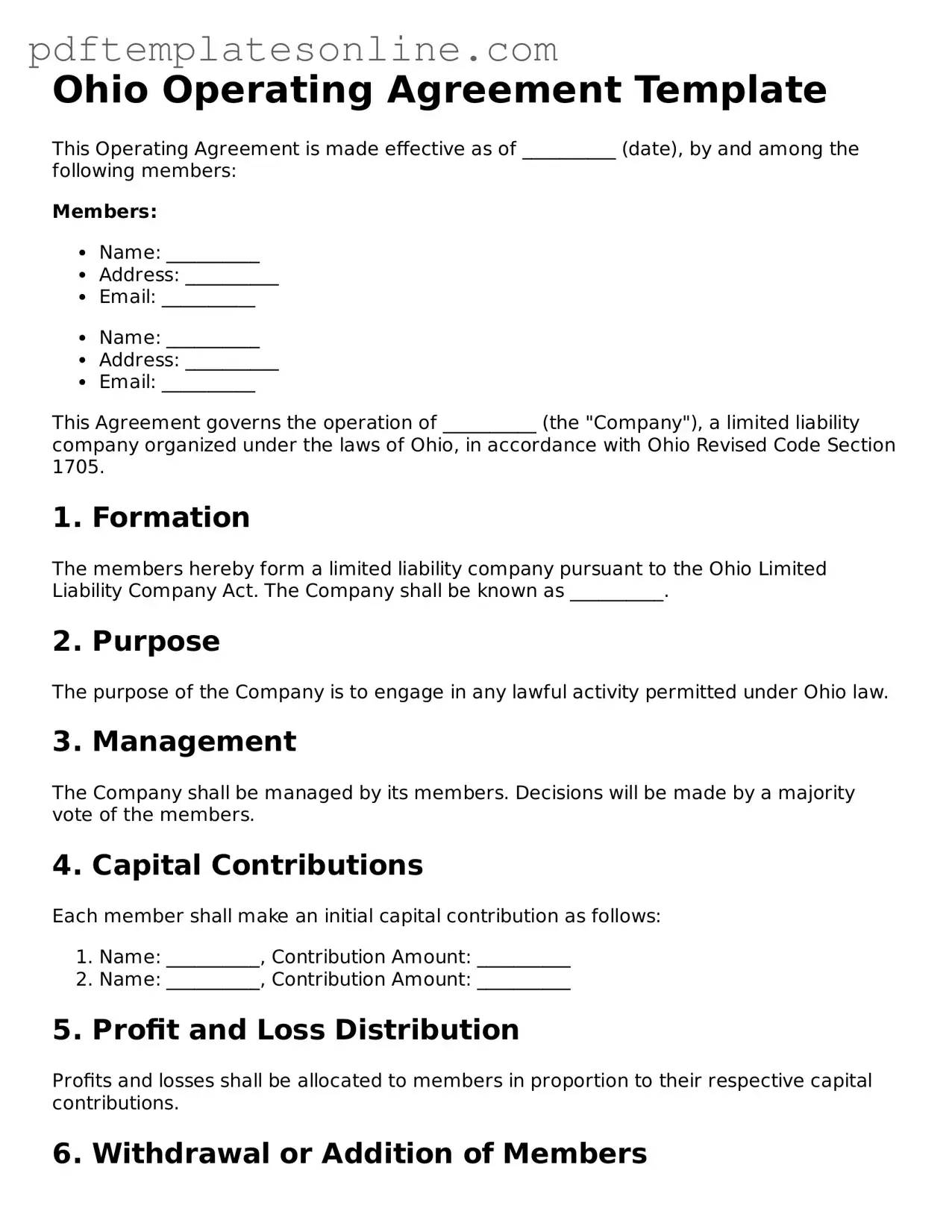When filling out the Ohio Operating Agreement form, many individuals make common mistakes that can lead to confusion or legal issues down the line. One frequent error is failing to include all members' names. Each member's name should be clearly stated in the agreement. Omitting a member can create disputes about ownership and responsibilities.
Another mistake is not specifying the management structure of the business. It is essential to clarify whether the company will be member-managed or manager-managed. This decision impacts how the business operates daily and who has the authority to make decisions.
Some people overlook the importance of detailing each member's financial contributions. Clearly outlining how much each member invests helps prevent misunderstandings regarding ownership percentages and profit distribution. Without this information, disputes may arise over financial expectations.
Additionally, many individuals forget to include procedures for handling disputes. It is wise to establish a method for resolving disagreements among members. This could involve mediation or arbitration. Having a clear plan in place can save time and money if conflicts occur.
Another common error is neglecting to update the Operating Agreement when changes occur. If a member leaves or new members join, the agreement should reflect these changes. Keeping the document current ensures that it accurately represents the business's structure and operations.
Finally, some people fail to sign and date the agreement properly. A signed Operating Agreement is a legally binding document. Without proper signatures, the agreement may not hold up in court. Always ensure that all members sign and date the document to validate it.
